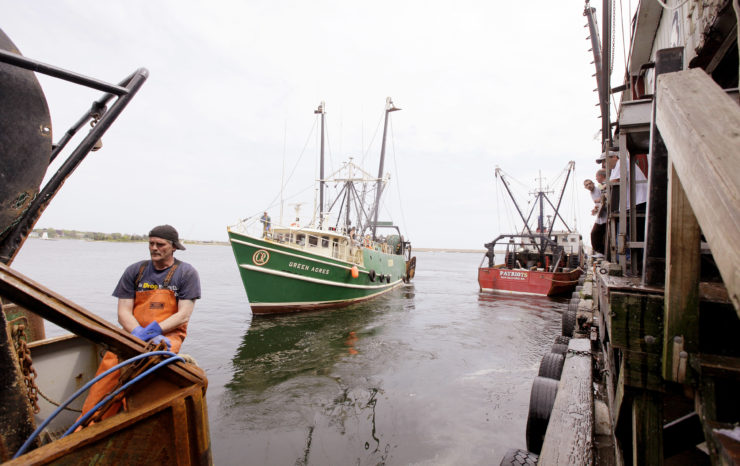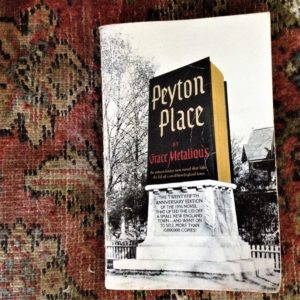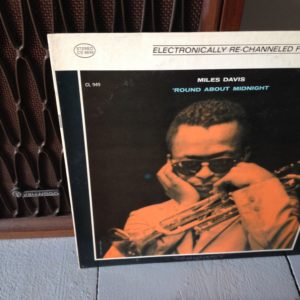
Friends and relatives say their goodbyes during the funeral mass of slain journalist Javier Valdéz, in Culiacan, Mexico.
A darkness runs through this week’s post. Most disturbing is the interview with yet another Mexican journalist who was later gunned down for being brave enough to write about the vicious cartels there. And then in the One Great Sentence, French novelist/true crime journalist Colette tries to get inside the mind of a serial killer. And librarians who work next to what locals call “Needle Park” are forced to carry overdose antidotes so junkies don’t die in their bathrooms. Even the fiction, “Peyton Place,” is about incest and murder and dark secrets and small-mindedness. After you read it, go out into the sunshine and enjoy your long weekend.

A protestor holds a sign reading "No more violence against journalists," during a demonstration in Mexico City a day after journalist Javier Valdez was slain in the northern state of Sinaloa.
The truth must be told: a conversation with slain journalist Javier Valdez. Twitter can be a wonderful thing sometimes: Ernesto Priego tweeted that someone should translate a haunting interview of Mexican journalist Javier Valdez just months before he was gunned down. I got in touch with him, and he volunteered to translate it himself, and to write an essay about the dangers reporters and editors in Mexico face. The result is a must-read. As Priego writes: “His journalism told stories that, when put together, reconstructed the horrific jigsaw puzzle of Mexico’s national tragedy.”
The soundtrack: “The Line of Fire,” by Junip. This song, with its musical echoes to David Bowie and Pat Metheny’s “This Is Not America” (a timely song these days), is both beautiful and spooky. When editing certain stories, I used to have it on repeat.
One Great Sentence
“Did he kill? If he did kill, I would swear that it is with this meticulous, somewhat maniacal, admirably lucid care with which he classifies his notes, drafts his papers. Did he kill? Then it is while whistling a little tune, and wearing an apron for fear of stains.”
Colette, “Voici Landru!” Le Matin, November 8, 1921
Read why we think it’s great.

As one fishing vessel leaves the dock another pulls up to offload its catch in New Bedford, Mass.
Ben Goldfarb and “The Deliciously Fishy Case of ‘The Codfather.'” The first thing I learned from this interview with Ben Goldfarb about his recent article in Mother Jones: There are fish journalists. As in: “It’s incumbent upon fish journalists to find really powerful characters who can carry these otherwise very abstruse stories.” The second thing: His really powerful character was the fishing world’s version of Marlon Brando in “The Godfather.” Interviewer Katia Savchuk says: “It’s a good example of how an eye-catching narrative can be used to tell a policy story. And of how having a beat — especially an obscure one — can help you jump on stories that resonate nationally.”
The soundtrack: “Fisherman’s Blues,” by the Waterboys. Absolutely love this song. That fiddle! And the moment when he finally sings, “And on that fine and fateful day/ I will take thee in my hand/I will ride on a train/ I will be the fisherman/with light in my head, you in my arms.” Lovely.
What I’m reading online: The literary sleuthing in this discovery is so cool: For 50 years, a piece of carbon paper was stuck in the back of a book. Then someone found it and deciphered it, and realized it contained two unseen poems by Sylvia Plath. If you’re young and haven’t ever seen carbon paper, it’s this deeply pigmented paper that made a copy of what you wrote or typed. I’m having a sensory memory of handling it.
Let’s keep the literary vibe going with this Philadelphia Inquirer story about a library near a park people call “Needle Park” because of the number of junkies who hang out there. Now librarians carry OD antidote and conduct overdose “drills” because so many drug tourists are collapsing in and around the library.
And this Elle profile of New York Times White House reporter Maggie Haberman is a galloping read: vivid, with great momentum. The deck hed says she “may be the greatest political reporter working today.” And the story says: “Her expertise wasn’t just Trump—it was the Trump psyche.”
 What’s on my bedside table: It’s been a Peyton Place kind of week. First I spotted it at my favorite used bookstore, Lobster Lane books out on a Maine peninsula, and then I watched it, just for the melodrama and the local scenery — it was filmed in a nearby town. Grace Metalious was a bit heavy-handed in the writing (opening line: “Indian summer is like a woman. Ripe, hotly passionate, but fickle, she comes and goes as she pleases…”), but it took guts to write this in New England in the 1950s.
What’s on my bedside table: It’s been a Peyton Place kind of week. First I spotted it at my favorite used bookstore, Lobster Lane books out on a Maine peninsula, and then I watched it, just for the melodrama and the local scenery — it was filmed in a nearby town. Grace Metalious was a bit heavy-handed in the writing (opening line: “Indian summer is like a woman. Ripe, hotly passionate, but fickle, she comes and goes as she pleases…”), but it took guts to write this in New England in the 1950s.
 What’s on my turntable: Although I spend most of my time listening to music on Spotify, sometimes I want to hear the needle touching down on vinyl. This week’s vinyl: “‘Round About Midnight,” by Miles Davis. What timing Davis had. Those pauses and then rushes, those coursing streams of music and then the swallowed notes. And he had some of the best covers in album-dom. This isn’t my favorite — that would be “Porgy and Bess” — but it’s still magnificent.
What’s on my turntable: Although I spend most of my time listening to music on Spotify, sometimes I want to hear the needle touching down on vinyl. This week’s vinyl: “‘Round About Midnight,” by Miles Davis. What timing Davis had. Those pauses and then rushes, those coursing streams of music and then the swallowed notes. And he had some of the best covers in album-dom. This isn’t my favorite — that would be “Porgy and Bess” — but it’s still magnificent.
If you want to chat about storytelling (or music), you can reach me at editor@niemanstoryboard.org. Or you can find me at @karihow on Twitter.


